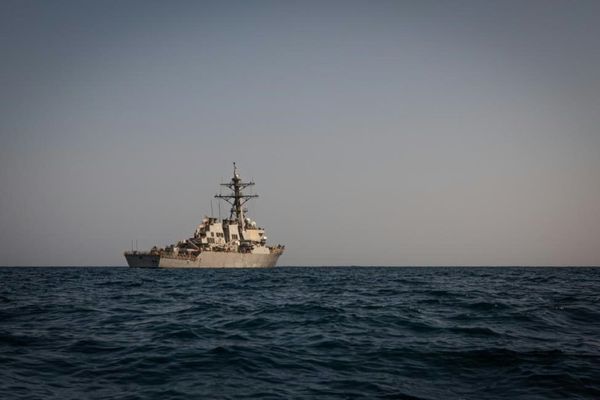Chinese weapons are starting to show up in the world’s biggest conflict zones, underscoring its technological advancement and investment in this area.
In the 1990s and 2000s, Chinese weapons systems and military equipment were seen as being little more than imitations of old Russian or even Soviet systems. China was largely reliant on exports from Moscow and lacked the capacity to create its own systems.
However, with China’s recent economic development and technological growth, state-run Chinese firms are now increasingly significant military players. Reports suggest that China now has significantly more advanced weapons systems. An example of this is a J-20 fighter flying seemingly undetected through Tsushima Strait in June 2025, in range of US, Japanese and South Korean radar systems.
As conflicts, including the war in Ukraine, are increasingly dominated by drone warfare, China’s drone technology has become more sophisticated. It has also made advances in developing hypersonic missiles and stealth technology.
China’s recent moves in the Pacific show off its military power, most recently its unannounced naval exercises off the coast of Australia. The exercise caused significant disruption to flights in the Tasman Sea. And China’s fleet sailed close to sensitive military sites in Australia including the Amberley airbase, which hosts the US’s B-2 stealth bomber fleet. This also shows how bold China has become, as well as illustrating how sensitive assets are in striking range of China’s forces.
Latest Chinese weaponry
Chinese weapons systems were in action in the Indo-Pakistani conflict in June. Pakistan used several Chinese-made J-10C fighters to shoot down several Indian jets, most notably the French-made Rafale fighter.
The Asian conflict sparked interest in the Chinese jet, with Egypt and Nigeria now showing interest in buying the J-10. A year earlier at the Zhuhai airshow in China, several Middle Eastern nations, including the UAE, made significant purchases of Chinese systems, following up earlier purchases of Chinese drones and fighter jets.
Chinese military companies now may have also found another potential client – Iran. Several Iranian military officials were recently photographed in the cockpit of a J-10 at the Zhuhai airshow.
The history of why China has invested significantly in military hardware is significant. Chinese military weaknesses were highlighted during the Gulf war and the third Taiwan Strait crisis in 1996. This saw China conduct missile tests in the Taiwan Strait as a signal to Taipei, which was seen as moving towards independence.
Washington deployed two carrier groups in response, consisting of two aircraft carriers and a large number of escorts. These significantly outclassed China’s ships, with more firepower and more advanced technology. At that time, Beijing was dependent on Soviet-made equipment. Its limitations were highlighted by the Chinese navy’s inability to detect US submarines in the Taiwan Strait.
The need to upgrade its military led to a continuous 10% increase in the Chinese defence budget, as well as widespread military reforms. These occurred under Jiang Zemin, chairman of the Central Military Commission (the supreme military body for the Chinese Communist Party) from 1989 to 2004, and president of China from 1993 to 2003. These changes laid the foundations for China’s modernised military systems today.
Technological power
China’s military modernisation has also been representative of its wider investment in technology. With some Chinese technology, such as AI chatbot DeepSeek, now challenging western domination.
Scholars have long argued that economic power leads to greater military power and a greater global role.
With the conflicts in Ukraine, south Asia, and the Middle East showing the limitations of more established European and Russian hardware, there are growing opportunities for Chinese weapons technology. It’s also likely that Chinese military systems will find customers among countries that are not on Donald Trump’s list of favoured nations, such as Iran. Should Iran be able to equip itself with Chinese systems, it will be better placed to go head-to-head with Israel.
All of these military advancements have given Beijing greater confidence as well as making the strategic position of the US and its allies in Asia more precarious. While the J-20 demonstrated the vulnerability of the first island chain, (a string of strategically important islands in east Asia) the latest innovation, the J-36, could reshape aerial warfare in the region. Integrated with AI and linked with drone swarms, the system has the potential to serve as a flying server, creating an integrated system not unlike the one recently used by Pakistan, but with even more advanced technologies.
All of these military manoeuvres show how China is becoming a significant player in global conflicts, and how this may give it more strength to challenge the current world order.
Tom Harper does not work for, consult, own shares in or receive funding from any company or organisation that would benefit from this article, and has disclosed no relevant affiliations beyond their academic appointment.
This article was originally published on The Conversation. Read the original article.







